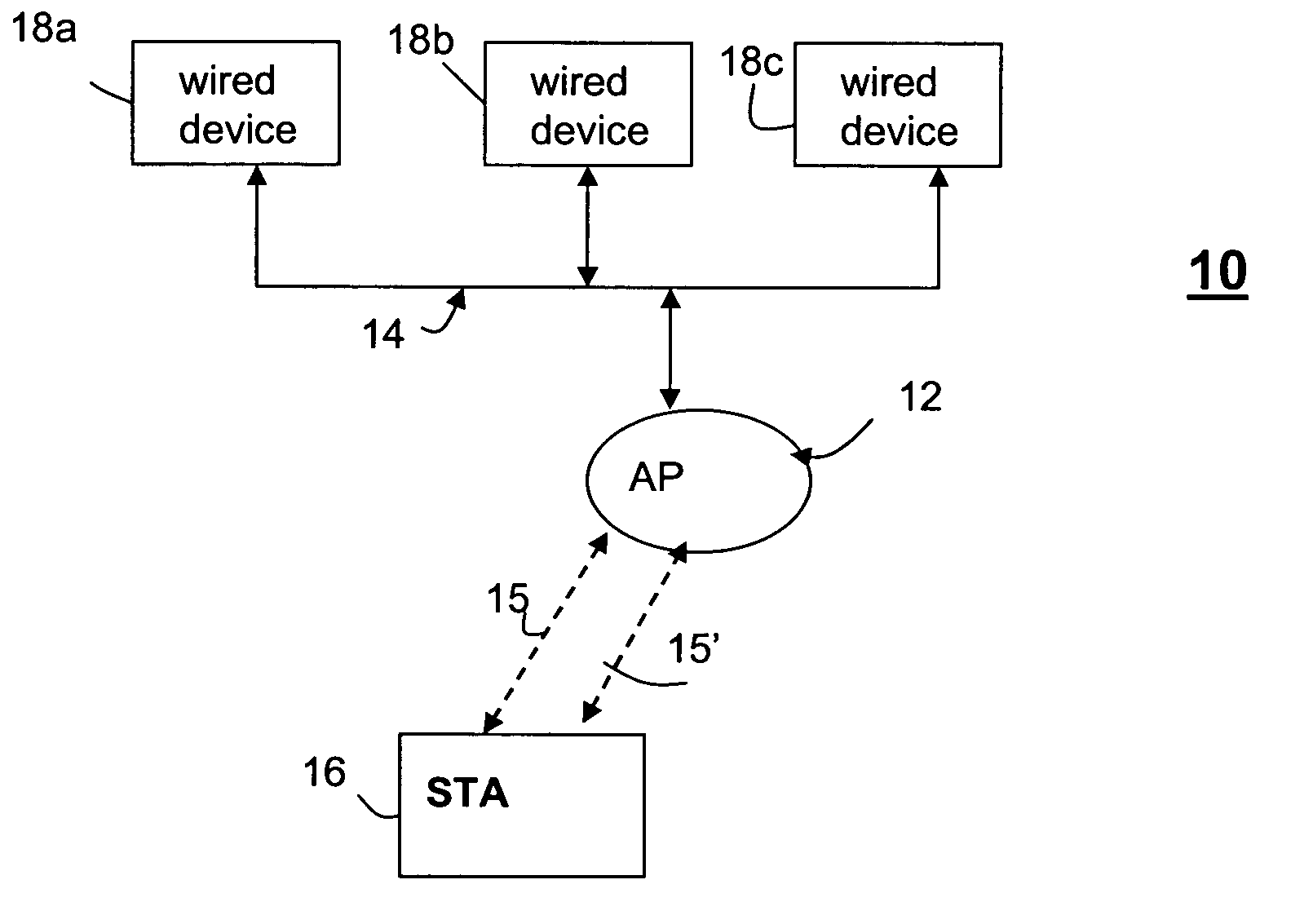Access point channel forecasting for seamless station association transition
a technology of access point channel and station association, applied in the field of seamless transition of access point and station association, can solve the problems of compromising station/ap communication, time-consuming connection building process, and loss of station connections
- Summary
- Abstract
- Description
- Claims
- Application Information
AI Technical Summary
Benefits of technology
Problems solved by technology
Method used
Image
Examples
Embodiment Construction
[0020] Referring to FIG. 1 a wireless access point (AP) 12 is operative to provide network access to a wireless end stations (STAs) 16 such as a personal computer, PDA, notebook computer, phone or other wireless device. A STA is typically a mobile device coupled via a radio frequency connection 15 to the AP 12. The AP is typically a stationary device having a wire-line connection with another network device such as devices 18a-18c, which may be, for example, a personal computer, switch, router or server in a network. Communications between the AP and the STAs are typically two-way at a selected radio frequencies, or channels.
[0021] In one embodiment of the invention, the AP 12 is adapted to recognize and respond to interference in a manner described in patent application attorney docket number 160-091, entitled “Backup Channel Selection in Wireless LANS”, incorporated by reference above. An AP as described therein includes a table of interference profiles stored in memory which are...
PUM
 Login to View More
Login to View More Abstract
Description
Claims
Application Information
 Login to View More
Login to View More - R&D
- Intellectual Property
- Life Sciences
- Materials
- Tech Scout
- Unparalleled Data Quality
- Higher Quality Content
- 60% Fewer Hallucinations
Browse by: Latest US Patents, China's latest patents, Technical Efficacy Thesaurus, Application Domain, Technology Topic, Popular Technical Reports.
© 2025 PatSnap. All rights reserved.Legal|Privacy policy|Modern Slavery Act Transparency Statement|Sitemap|About US| Contact US: help@patsnap.com



